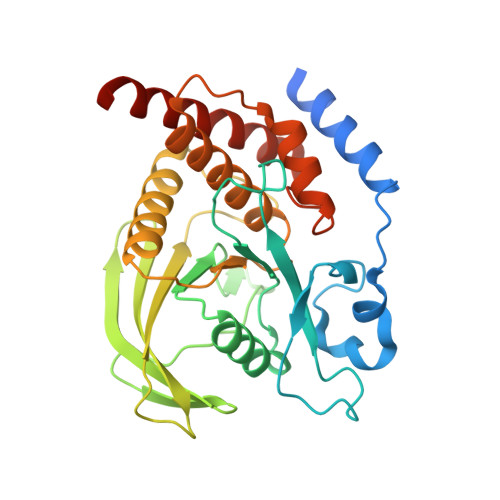SHP Family Protein Tyrosine Phosphatases Adopt Canonical Active-Site Conformations in the Apo and Phosphate-Bound States.
Alicea-Velazquez, N.L., Boggon, T.J.(2013) Protein Pept Lett 20: 1039-1048
- PubMed: 23514039
- DOI: https://doi.org/10.2174/09298665113209990041
- Primary Citation of Related Structures:
4HJP, 4HJQ - PubMed Abstract:
Protein tyrosine phosphatase (PTP) catalytic domains undergo a series of conformational changes in order to mediate dephosphorylation of their tyrosine phosphorylated substrates. An important conformational change occurs in the Tryptophan-Proline-Aspartic acid (WPD) loop, which contains the conserved catalytic aspartate. Upon substrate binding, the WPD loop transitions from the 'open' to the 'closed' state, thus allowing optimal positioning of the catalytic aspartate for substrate dephosphorylation. The dynamics of WPD loop conformational changes have previously been studied for PTP1B, HePTP, and the bacterial phosphatase YopH, but have not yet been comprehensively studied for the nonreceptor tyrosine phosphatase SHP-1 (PTPN6). To structurally describe the changes in WPD loop conformation in SHP-1, we have determined the 1.4 Å crystal structure of the catalytic domain of SHP-1 in the Apo state and the 1.8 Å crystal structure of the SHP-1 catalytic domain in complex with a phosphate ion. We provide structural analysis for the WPD loop closed state of SHP phosphatases and the conformational changes that occur upon WPD loop closure.
Organizational Affiliation:
Department of Pharmacology, Yale University School of Medicine, 333 Cedar St., SHM B-316A, New Haven, CT 06520, USA.















